How piano chord inversions work is a question we get asked all the time as music teachers. What are they? How do they work? Why do I need them?
Chord inversions may seem complicated, but once you understand the basic rules, they’re really quite simple. And once you understand them, chord inversions will take your playing to the next level.
This beginner-friendly article will explain chord inversions in an in-depth yet easy way. Be sure to also download our free chord inversion cheat sheets and charts.
Table of Contents:
Get exclusive interviews, fascinating articles, and inspiring lessons delivered straight to your inbox. Unsubscribe at any time.
Let’s review the basics. What is a chord? In a nutshell, a chord is a group of notes that sound good when played together. That’s it.
The most popular chords you’ll hear on the piano contain four or three notes. Three-note chords are called triads. Triads are ideal for music theory beginners, so we’ll stick to talking about triads in this article.
There are two main types of triads: major triads and minor triads.
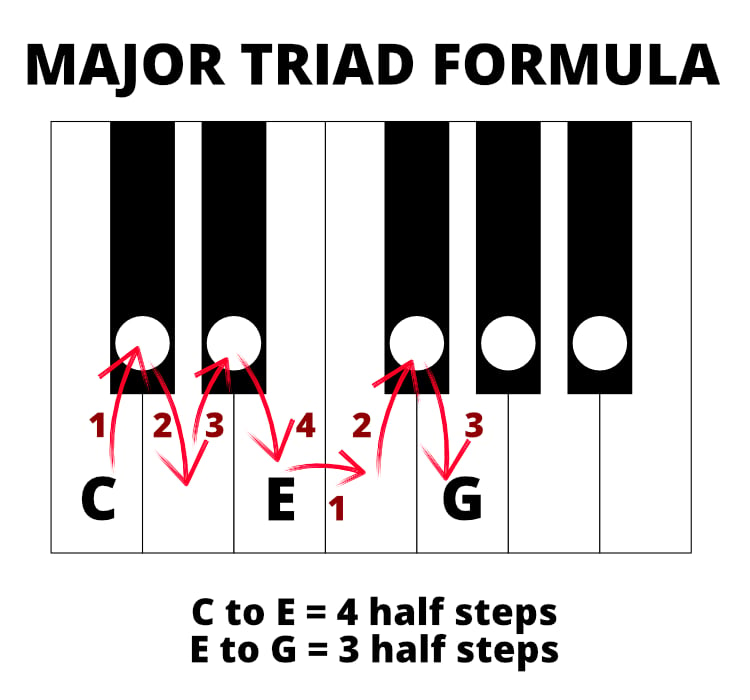
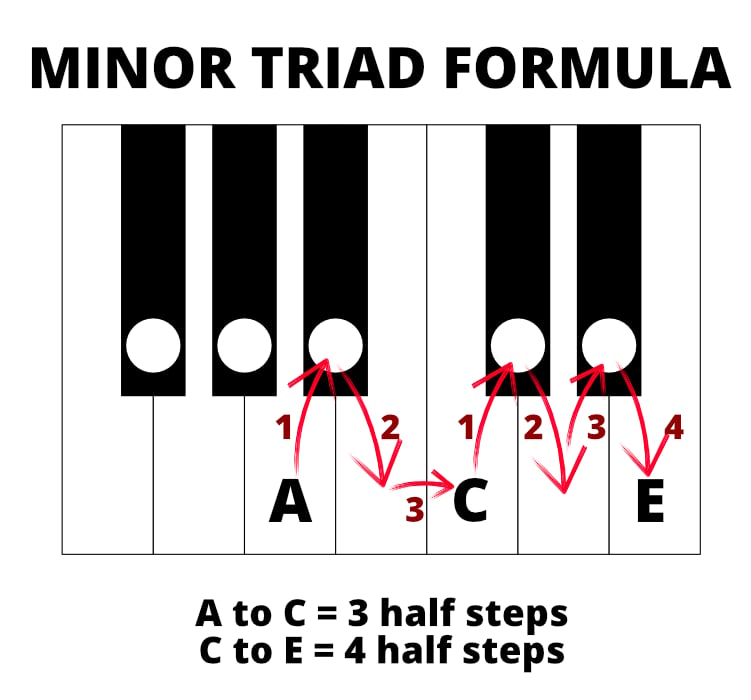
Major triads sound “happy.” The note the triad is built on and named after is called the root. Count up four half-steps and you’ll land on the third. Count up another three half-steps and you’ll land on the fifth. And there you have it: a major triad.
Minor triads sound “sad.” Again, it’s built on and named after the root note. Count up three half-steps from the root and you’ll get your third. Count up another four half-steps to get your fifth.
In short, chord inversions are when you re-position the notes of a chord a certain way. The inversion process of any chord is the same. For example, let’s take our C major triad (C-E-G).
The default position of the C major triad is C-E-G. This is called the root position because the root note (C) is at the bottom. On a chord chart, the symbol for this is “C.”
C

To create the first inversion, flip C to the top of the stack, making E-G-C. You may see this notated as “C/E” on a chord chart.
C/E

The second inversion of our C major triad is when you flip the bottom note again, making G-C-E. On a chord chart, this may be notated as “C/G.”
C/G

Here are all the positions played one after another:
The cool thing about inversions is that they have a similar shape across all keys. For example, here’s a D minor triad in all three positions:
Dm: D Minor Triad in Root Position

Dm/F: D Minor Triad in 1st Inversion

Dm/A: D Minor Triad in 2nd Inversion

The Piano Chords & Scales book is one of our top-selling products of all time. Now, you can get it electronically for free. That means you can instantly look up scales and chords on your phone, tablet, or laptop without hunting for WiFi. The book contains major, blues, pentatonic, and all three minor scales. Plus major, minor, and 7th chords in all inversions, and sus chords.
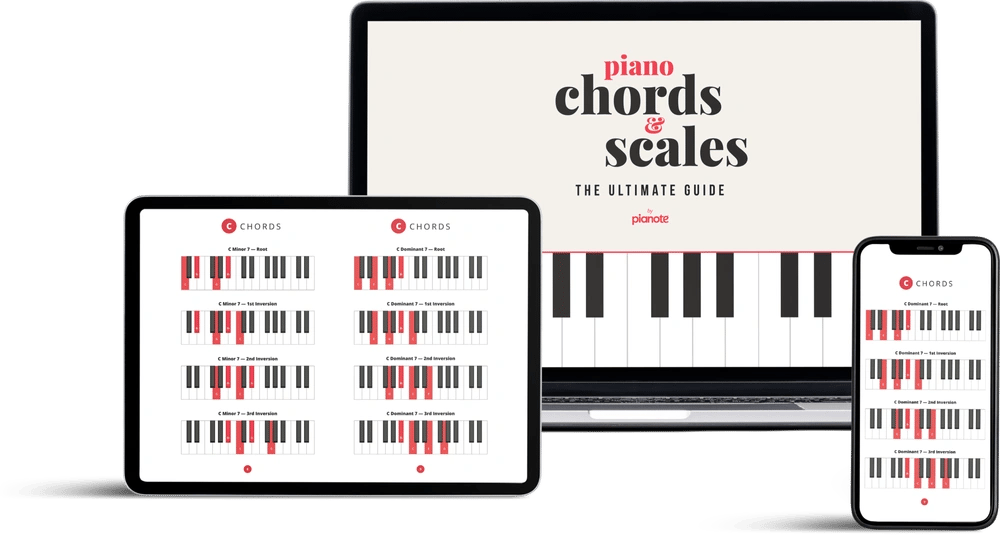
So why go through the trouble of memorizing all the different combinations of the same chord?
Because, in addition to making songs sound more interesting, inversions also make it easier to change chords throughout a song.
Here’s an example. Say you want to change chords from C to F.
Going from the root position of C to the root position of F requires you to leap inconveniently across the keyboard.
Going from C root position to F 2nd inversion is just next door!
Here’s another example: C to Am. C (C-E-G) and Am (A-C-E) have two notes in common: C and E. So, all we have to do is switch G for A.
This means going from C root position (C-E-G) to Am 1st inversion (C-E-A).
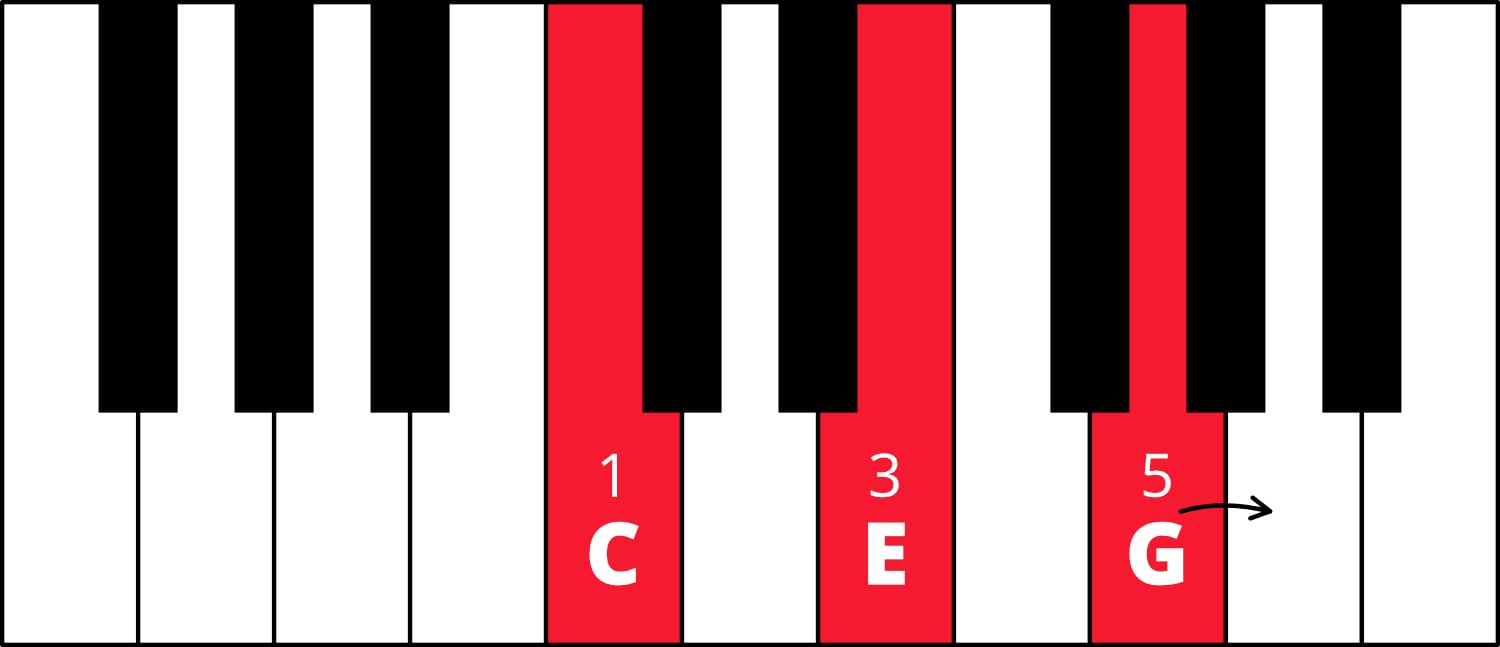
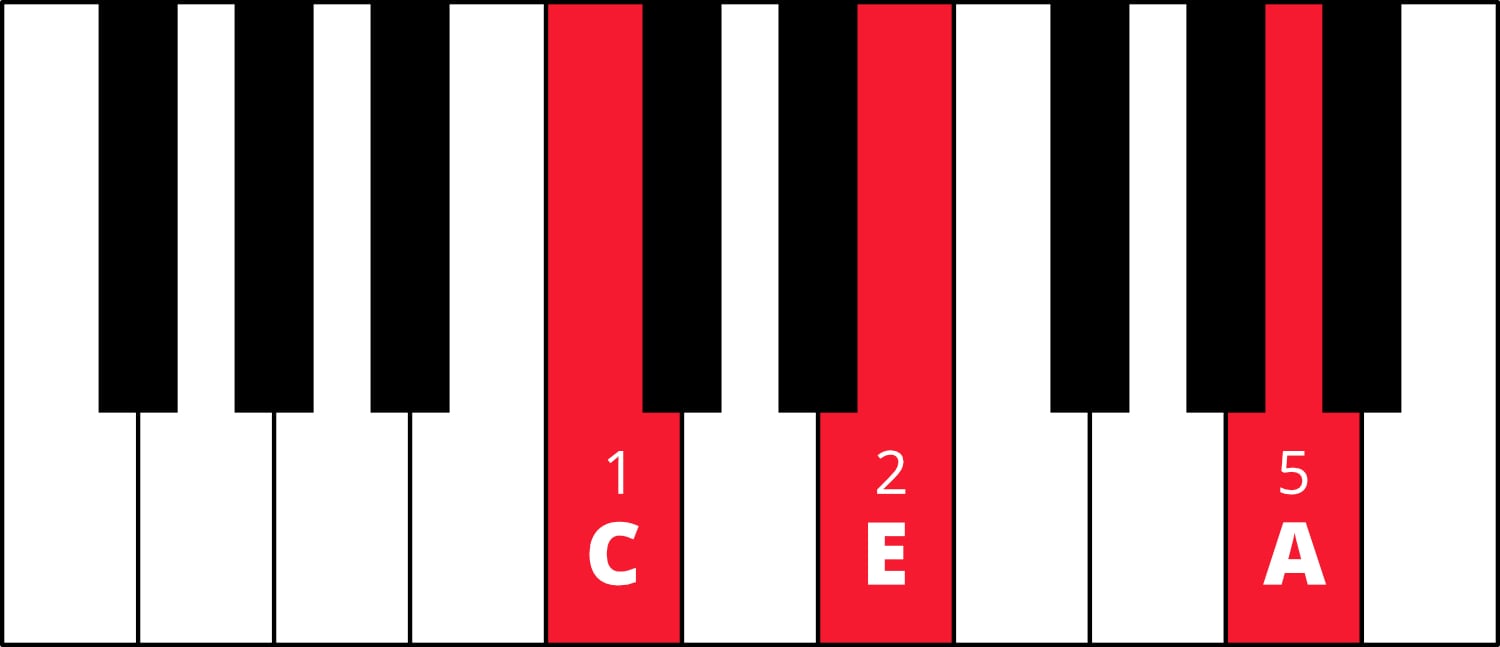
(Sidenote: We adjusted the fingering from 1-3-5 to 1-2-5 — it’s just comfier this way.)
Musically, chord inversions add interest to a song because they slightly change the sound of a chord without creating dissonance. Our ears are naturally drawn to the top note of chords, so while these chords can sound like a “different note,” they’ll still sound good accompanying whatever melody you’re playing.
So, next time you experiment with chord progressions, try using a different inversion here and there. You’ll open yourself to so many more possibilities.
You can learn more about using inversions as shortcuts in this lesson.
In order to use inversions effectively, you have to know them really well.
Ideally, you should be able to play a chord inversion as soon as it’s named. Quick! Play D Major in 2nd inversion!
So, how do you practice? Here are some tips.
It’s easy to practice stuff in C Major, but you’ll really cement those chord shapes in your head if you practice in other keys. Especially those keys you are less familiar with.
Try D major and F major for a start. D Major has two sharps (F# and C#) and F Major has one flat (Bb). See if you can figure out the inversions yourself and then check your answers.
If you play triads and their inversions in different keys, you’ll see the same shapes over and over again. Root position chords look similar, 1st inversion chords look similar, and so on.
Practice these shapes, and try to visualize the same shapes in different keys. You’ll make mistakes at first, but with practice, it’ll get easier.
On the subject of shapes, make sure you practice recognizing inversions when you see a chord, not just how to play them.
You can identify the root note of any chord in any inversion by finding the note with the most space underneath it.
Here’s an example:
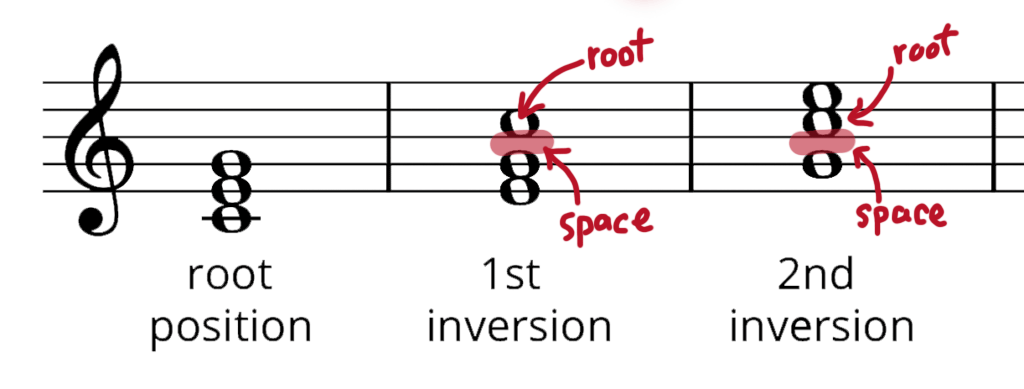
Since the note with the most space beneath is C, we can infer that these are C chords. And because they sound “happy” and follow the major triad formula, we can conclude that they’re C Major triads.
Classical pianists practice inversions by playing through every single inversion in every single key both solid (notes together) and broken (notes apart). Here’s an example of broken triad practice:
Remember, you don’t have to tackle all three positions one after the other, super-smoothly, right away.
When you first start out, it makes sense to practice transitioning between just two positions. Go from root to first inversion, root to first inversion until you can do it in your sleep! This will help you build a strong foundation and cut down on frustration later.
Remember: be kind to yourself! If this takes a while, that’s normal and okay.
Now, we won’t sugarcoat this: practicing inversions the traditional way can feel tedious. But we promise it helps. Just spend a few minutes each day cycling through chord inversions. Do a key per day. Eventually, you’ll be able to play them in your sleep.
Chord progressions are an awesome practice tool because they make your practice sessions musical and enjoyable. And because one of the best uses for chord inversions is transitioning between chords, this is a great exercise to put theory into practice.
So start your first chord in root position and see what’s the quickest way to transition to the next chord. You can learn more about this in our lesson on chord shortcuts.
Dreamy 7th chords add a lot of personality to your improvisations. They can also be fun to practice and will further your understanding of inversions.
Check out this video for a fun, creative way to practice 7th chords and their inversions in a way that doesn’t sound like a classical exercise.
Finally, as promised, here are links to a PDF of ALL piano chord inversions in EVERY single key! We hope you find this resource helpful 🙂
Your musical journey starts today: try Pianote and get access to drum, vocal, and guitar lessons too!
Pianote is the Ultimate Online Piano Lessons Experience™. Learn at your own pace, get expert lessons from real teachers and world-class pianists, and join a community of supportive piano players. Learn more about becoming a Member.


By signing up you’ll also receive our ongoing free lessons and special offers. Don’t worry, we value your privacy and you can unsubscribe at any time.
We use cookies for traffic data and advertising. Cookie Policy »